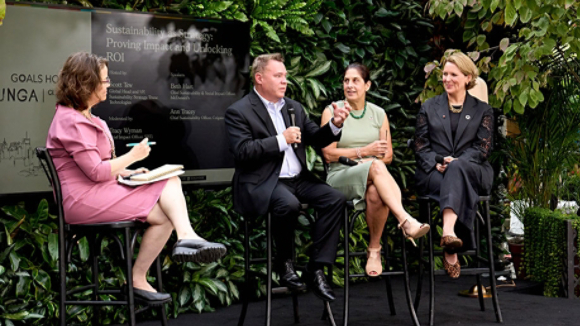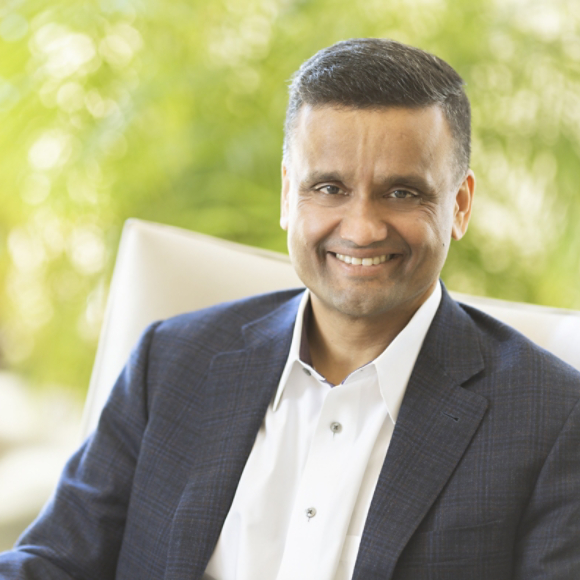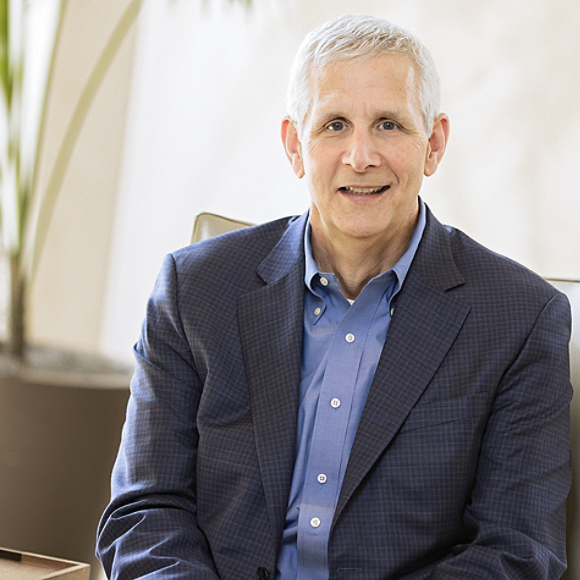November 13, 2025
Collaboration at Scale: Unlocking Flexibility for Energy Optimization
As technology continues to transform our economy, flexibility and collaboration across the energy sector will help drive efficiency and resilience.

This article is co-authored by Elena Giannakopoulou, Chief Strategy Officer, Public Power Corporation.
Today, it is estimated that 30% of electricity is being wasted in the built environment. This is much bigger than leaving the lights on; it’s the result of complex systems operating inefficiently, equating to hundreds of billions of dollars per year in waste.
As new technology changes how we produce and consume energy, suppliers and demand-side consumers need to collaborate to increase efficiency and resiliency while reducing environmental impact.
The rise of renewables
The power system is undergoing a rapid and unprecedented transformation. According to energy think tank Ember, in 2024, clean power generated more than 40% of the world’s electricity, driven by record growth in renewables, particularly solar energy.
The rapid scale-up of renewables shows no signs of slowing, driven by the cost-competitiveness of solar photovoltaics and wind, and reinforced by energy security concerns, especially in regions such as Europe. Yet, with greater renewable energy penetration, energy production becomes more volatile.
Solar output peaks at midday, wind peaks overnight and hydropower fluctuates with droughts – this is when flexibility comes into play. While this was manageable when renewable energy solutions played only a minor role in power generation, this now becomes a crucial issue when renewables form the backbone of the system.
For example, in Greece, renewables with 28.7 terawatt-hours (TWh) accounted for 55% of total electricity generated in 2024, a more than twofold increase from the 11.5 TWh and a 22% share in 2019, according to the system operator’s data.
Flexibility in the power system refers to its ability to adapt quickly to new circumstances. It comes from storage (both in the form of batteries and pump-hydro plants), flexible generation, interconnectivity, smart grids, demand-side response, energy management and digital infrastructure.
Without flexibility, the system hits a ceiling; no matter how cheap clean energy gets, its value diminishes if it can’t be fully utilized.
Flexible assets directly address this inefficiency, turning volatility into value. The case is clear: flexibility reduces curtailment, increases renewable energy penetration and lowers total system costs.
Technologies that provide flexibility are increasingly mature and highly cost-effective. Lithium-ion batteries have seen sharp cost declines with pack prices dropping just over 90% since 2010, according to BloombergNEF.
Globally, investments in flexibility are on the rise. In 2024, energy storage, for instance, saw approximately $54 billion of investments, a 35% increase from 2023, according to BloombergNEF.
A report from SolarPower Europe estimates that deploying flexible technologies alongside solar could lead to annual net system cost savings of €32 billion by 2030.
With 30% of electricity being wasted after the meter, there is a massive opportunity for energy optimization on the demand side.

Innovation, a demand-side accelerator
Flexibility on the supply side is crucial but the demand side holds untapped potential. Smart meters, demand response programs and energy efficiency technologies are enabling businesses and consumers to actively contribute to grid stability and optimization.
Flexibility on the demand side involves adjusting energy consumption based on optimal load points, availability and price. This can be achieved through various technologies and strategies:
- Systems design and innovation: Buildings are large energy consumers. Advanced thermal systems in buildings that integrate heating, cooling and controls can greatly improve efficiency and flexibility. All-electric systems use three to four times less energy than conventional methods, cut costs and boost returns. Storage systems such as ice storage can also lower bills by shifting energy use to off-peak hours.
- Utilization of AI to optimize efficiency: Digital tools and artificial intelligence (AI) can enhance heating and cooling systems, making them smarter, more flexible and more efficient. By using data from buildings and weather forecasts, AI optimizes energy use, cuts costs and reduces electricity demand across multiple buildings. AI-driven energy management systems in commercial buildings can reduce energy consumption by up to 20%.
Electrification and AI are part of the equation, helping relieve pressure on the grid at peak times. Thermal management systems are helping to decarbonize buildings large enough to have their own zip code, and they can work in smaller buildings to save energy and cost.
Research into physics-informed neural networks, automated control and data infrastructure will accelerate energy optimization and sustainable impact. These innovations make economic sense and there is reason for optimism.
Making energy more affordable and resilient
Every megawatt-hour of energy, especially clean electricity, is too valuable to waste – doing so is a missed opportunity for efficiency, growth and climate action. Flexibility in both energy supply and demand not only helps consumers reduce energy and costs but also supports grid security and sustainability.
To fully realize the benefits of flexibility, regulatory frameworks must incentivize its monetization. Dynamic pricing of electricity better captures system variability and rewards the fast response of flexibility sources.
Grid modernization and digitalization are crucial for integrating distributed resources, while planning processes must prioritize system-wide efficiency. This will reveal the true value of flexibility, reduce fossil fuel dependence and improve the resilience of modern power systems while delivering affordable electricity to consumers.
With exciting progress in innovation and research, and the technology, talent and commitment to solve these challenges together, we can create a more flexible, efficient and resilient energy ecosystem.
This article originally appeared on the World Economic Forum blog.
Topic Tags

 English
English





















